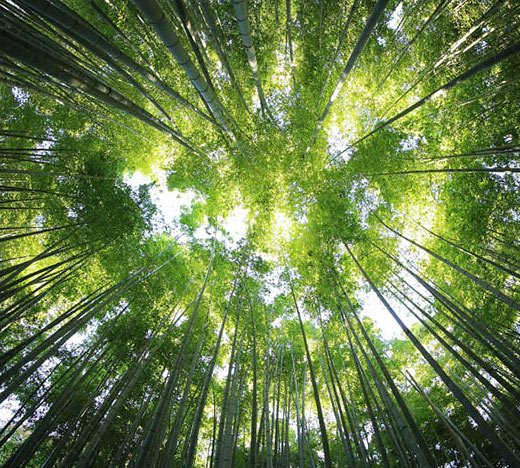And Rising Ocean Fury
Reports coming in from around the world left no doubt. Last year was the hottest in recorded history. The Earth’s average temperature rose from the preindustrial average by 1.48 degrees Celsius (2.66 degrees Fahrenheit), perilously close to the 1.5 degrees Celsius mark drawn in the sand by scientists as the threshold not to cross. Scientists were at a loss to explain how the jump in temperature could be so much larger than their models predicted. With much talk about carbon dioxide in the atmosphere, they did not see, like the emperor with no clothes, that the land had been stripped of vegetation and degraded.
George Perkins Marsh saw more clearly back in 1847. When speaking to the Agricultural Society of Rutland County, Vermont, he described the situation: “Man cannot at his pleasure command the rain and the sunshine, the wind and frost and snow, yet it is certain that climate itself has in many instances been gradually changed and ameliorated or deteriorated by human action. The draining of swamps and the clearing of forests perceptibly affect the evaporation from the earth and, of course, the mean quantity of moisture suspended in the air. The same causes modify the electrical condition of the atmosphere and the power of the surface to reflect, absorb, and radiate the rays of the sun, and consequently influence the distribution of light and heat and the force and direction of the winds. Within narrow limits, domestic fires and artificial structures also create and diffuse increased warmth, to an
extent that may affect vegetation.”
Marsh explained that deforestation leads to desertification. He noted that once lush lands gone to deserts around the Mediterranean from Morocco across the Sahara to the Steppes of Asia and Mongolia, “the operation of causes set in action by man has brought the face of the earth to a desolation almost as complete as that of the moon.”
Environmental degradation and resource scarcity result from misbalancing an environmental equilibrium, said Marsh. As long as we manage to keep resources in good condition, the welfare of future generations will be secured.
Much of the Adirondack Forest was timbered following the Civil War. Marsh argued in 1875 that if the watershed were allowed to deteriorate, there would be insufficient groundwater to provide rivers with adequate water. The Erie Canal would cease to be navigable for the barge transport that was vital to New York’s burgeoning economy. As a result, the Adirondack State Park (9,375 square miles) was created for
watershed protection.
Today, the problem is too large to be solved with public parks. Instead, the government could harness market forces with a carbon offset fund that pays the value of the timber harvest. States with forests are obligated by law to raise revenue from timbering. For participating states, the Let Forests Grow Carbon Offset Fund would be matched by local private funds to pay the value not to cut timber on public lands. Private woodlot owners who have registered a timbering plan would also be paid the value at harvest time to leave the forest standing. Market forces reward those who reduce the destructive practice of clear-cutting, let trees pull down carbon dioxide to store more carbon, and let the soil become a bigger sponge to hold more water.
Standing trees provide much more carbon drawdown and water storage than planting new trees. Researchers have found that despite conventional wisdom, an 80-year-old forest has more than twice the carbon stored annually and wildlife values than a 40-year-old stand of trees. The oldest one percent of trees hold 30% of the stored carbon in the forest.
Measuring the amount of carbon dioxide in the atmosphere is the dipstick we use to quantify the climate calamity. Greenhouse gases have risen from 350 parts per million carbon to 420 parts per million carbon. We have gone from 700 billion tons of carbon in the atmosphere to 800 billion tons, and added a whopping 100 billion more tons of carbon dioxide. Where else can all the carbon go to get us back to 350 ppm?
The world’s biomass amounts to 564 billion tons. Packing that much carbon to increase the volume of plants and animals, an increase of 20%, will take decades and may not always be welcomed. Instead, we must look beneath the ground cover. The world’s soil contains 2800 billion tons of organic carbon. A four percent increase in soil volume would be more than 100 billion tons of carbon. There’s more: when the soil goes through a chemical process to become the black gold called humus, it stores carbon for thousands of years.
Whenever plants use photosynthesis, they draw down carbon dioxide and manufacture liquid carbon in the form of carbohydrates (lipids and sugars). For most plants, two-thirds of the carbon goes to their biomass, and one-third is pushed out of roots to feed the soil. Grasses are exceptional. Salt marsh hay, sea grass, and lawn grasses are the champions. They always exude half of the manufactured carbohydrates from their roots and keep only half for their biomass. Walk on the grass or cut it, and the grass is stimulated to draw down more carbon dioxide to repair itself and provide more for the soil. A New England lawn can put down an inch of soil in one year, weather permitting.
Applied nitrogen burns soil microbes and kills beneficial nematodes Unless quick-release fertilizer is spread on the lawn. The grass plants become addicted to food and water from above, and the plants are pushed apart so roots may be at the surface. The bare spots, called sun spills, bake in the sun. The soil compacts and dies and only the toughest weeds can grow there. The wimpy leaves restricted to a fertilizer diet provide easy munching for pests. The lawn care company comes to the rescue, punching holes, spreading more seeds, and spraying herbicides and pesticides. A chemical lawn has replaced a natural lawn. Rabbits, robins, and turkeys need not apply.
If, instead, established residential lawn owners did not apply quick-release fertilizer, the plants would stay closer together, and roots with fungi and bacteria would go down, opening the soil for living organisms, which include mites, springtails, insects, and worms. Bacteria provide enzymes, make accessible minerals, and fix nitrogen. A fertilizer-free lawn supports complex food webs topped by apex predators, foxes, hawks, and owls.
The Slow Water Carbon Offset Fund incentivizes residential property owners to have natural lawns and to add more lawn grass by paying those who pledge not to use quick-release fertilizers and harmful chemicals $1 per square foot of lawn up to 1000 square feet. The maximum amount granted to a property owner for making the lawn care pledge is $1,000.
The Slow Water Carbon Offset Fund would also pay property owners to slow the runoff by installing green infrastructure with a grant program modeled on Maryland’s Stormwater Program and Los Angeles County’s Safe Clean Water Program. Granted funds would be distributed to residents installing rain barrels, green roofs, permeable pavers that provide a hard surface that can also infiltrate water, a native plant garden designed to absorb water, and Miyawaki forests.
A Miyawaki forest is a micro-forest of perhaps 1,000 square feet, with around 40 different woody plant types representing all stages of succession, from field-loving blueberries, sumac, and pines to old forest oaks, ash, beech, and maples. The plants thrive, growing rapidly as the products of bacteria, including enzymes that thicken plant blades, are shared with all plants by the fungal mycorrhizal network.
Forests have been called the world’s lungs because they inhale carbon dioxide and exhale oxygen. Plants successfully moved onto dry land long ago by packing fungi and bacteria around their roots and releasing bacteria and fungi into the atmosphere. Water vapor nucleates around the micro-organic particles to form water droplets that come together to form cumulus clouds. Cumulus clouds, mostly white and drifting low in the atmosphere, reflect sunlight and cast shade to cool the Earth. Decades ago, over 50% of the world was draped in cumulus clouds. Now, cumulus clouds cover a bit less than 50%. The cumulus cloud cover balance has been upset by 1-2%.
The Sun sends 342 watts of energy per square meter to Earth. The outgoing thermal energy has fallen to 339 watts of energy per square meter. One percent less thermal energy leaving Earth has changed the climate and is warming the globe. Several factors are retaining energy from escaping the planet. Greenhouse gases, primarily water vapor (66 to 85%) in the form of high-thin cirrus clouds, reflect energy back. The water vapors that cling to dust, smoke, and other dry particles form a haze where a polar charge prevents cloud formation. Haze holds thermal energy. Finally, changes in the Earth’s surface’s retention of more heat play a big role in the balance of Earth’s energy received and energy released.
Water vapor is the elephant in the climate change room that too few acknowledge because fluctuating concentrations and shifting clouds have not made a compelling hockey-stick graph over the years.
A water droplet, rising and falling in the air, rapidly changes state from gas to water to ice to snow to water (and there may be additional states in between). Water oscillates between endothermic and exothermic reactions, drawing in and releasing heat. It is too quick hurtling through space in multiple states, too unpredictable, and too chaotic for climate scientists to model – predicting tomorrow’s weather is hard enough.
Meanwhile, over the forests where cumulus clouds form out of water vapor, there is a drop in atmospheric pressure. Moist air from high-pressure areas flows into the new lows over forests. Plants have developed a biotic pump to gain water in the moist air drawn off the ocean. When a forest is cut, the biotic pump is severed, and moisture stays over the ocean. Gathering moisture over the ocean gives it more energy. Heavier rains and stronger hurricanes will follow. When trees fall in a forest, the ocean has more energy, and storms become more destructive.
Our folly is to believe we can fix the climate without addressing what we are doing to the land. We have tipped several balances by 1-3%. Our actions causing climate change resulted in the hottest year on record. However, we could have avoided damages from droughts by taking better care of the land. We have worked against water instead of with it. We strip vegetation, bare the land, and destroy soils. Erosion and sedimentation carve and smother. We dry the land with hardened surfaces and spillways. Then, we blame climate, changing weather, industrialization, and people’s use of fossil fuels.
The Let Forests Grow and Slow Water Carbon Offset Funds do much more than offset our carbon footprints. The funds restore the natural cycles of water and carbon to advance responsible stewardship of the land. By acting locally, beginning at home, in our neighborhoods and states, we benefit everyone with a healthier, more verdant, and cooler Earth.







